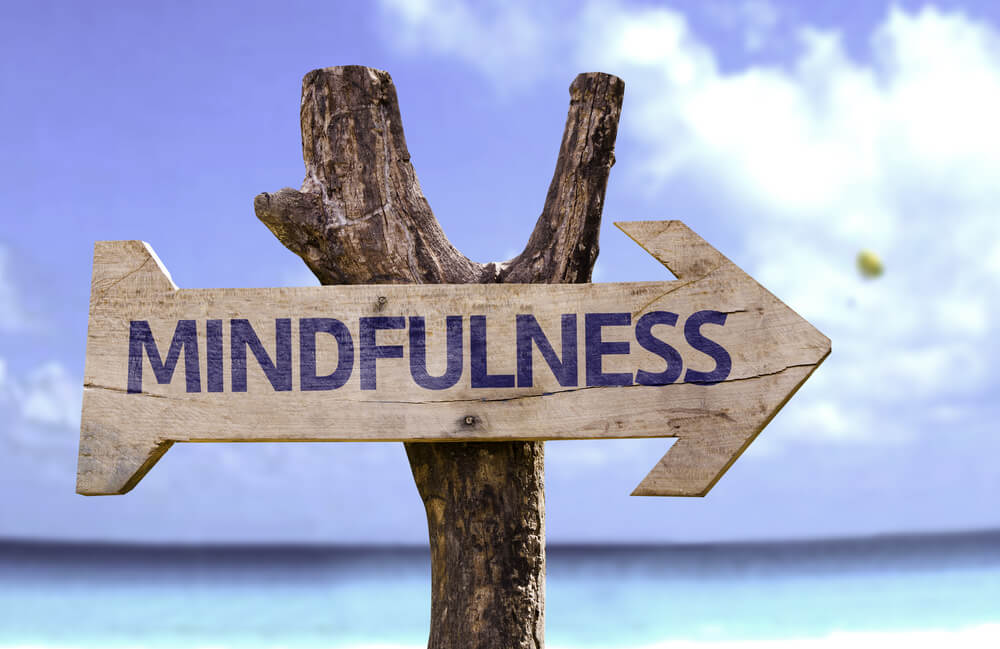Leading Mindfully
Mar 26, 2020 2:00:00 PM
Why leaders should practice mindfulness during these unprecedented times
What is Mindfulness?
“Mindfulness is the basic human ability to be fully present, aware of where we are and what we’re doing, and not overly reactive or overwhelmed by what’s going on around us” (Mindful.org). While not being overly reactive may feel a bit of a stretch these days, it is possible to stay present to what is happening, accept what is, and practice compassion for ourselves and others.
My initial reaction is often to manage safety by finding ways to maintain control and in recent weeks that’s in the form of a well-stocked pantry. Being overwhelmed is something I know and experience even when there isn’t a pandemic kicking up fear and uncertainty. I often practice mindfulness meditation to calm down enough to sleep or to soothe myself in a moment of panic. There are periods in my life when I have held a regular practice and times that I have slipped away. The past few months my practice has been focused on self-compassion and the time spent has been mind-altering (literally)! Today, I practiced being present to my sadness, disappointment and fear about the future. I practiced to help me accept what I cannot control and to find peace with the uncertainty. And to remind myself that I am not alone in what I am experiencing.
The benefits
There are many empirically supported benefits of mindfulness (Hayes 2011):
- Emotional regulation
- Decreased reactivity & increased flexibility
- Enhanced working memory
- Reduced rumination, depression, anxiety, and stress
- Interpersonal and Intrapersonal benefits
- Increased immune function
- and the list goes on
What I notice, is that ten minutes is enough time to slow down to see, allow, inquire, and love myself and others. My mindfulness practice is like pushing the canoe out into a lake that is mirroring the sky. As I focus on my breath, just like finding the rhythm with my oar, I settle into the moment.
The basics
There are many resources that can help you get started with a mindfulness practice. The University of Minnesota has a ten-minute guided meditation on their website that’s free. I also like the app Headspace. You can try it free for 30-days and their annual subscription is less than $70. In the beginning if you are not used to creating space to be present, it might feel a bit awkward. Trust me, that will pass, and you’ll come to relish creating space to be present to yourself.
The days ahead will tax us, and they call for leaders to practice self-care so they can operate at their best. This does not mean roaring into high gear and feverishly rushing past what is happening now. It will take each of us living in the present, not the past and not the future, as we circle toward what’s next. If you have found yourself in turmoil, give mindfulness a try for just 10 minutes a day for the next week. I’ve included some of my favorite resources below, and my own version of a meditation to ground and settle yourself when a difficult situation has you operating in a funk.
Guided SAIL meditation
Audio transcript below
Find a place where you can get comfortable and relax. Sitting upright in a chair with your hands placed face down on your thighs, or you might lie down with your hands placed comfortably at your side or resting on your stomach. Now take a moment to set your intention based on what you See is present for you in this moment. Perhaps you are feeling anxious about what is going on globally, or you might even be frustrated or angry about a situation with a colleague, friend or family member. Your intention might be to relax, to self-manage and avoid overreacting, or to let go of animosity. Pick what makes sense for you based on your current situation.
Begin to breath in through your nose, holding for just a moment, and then slowly exhale out of your mouth. This time, count to five as you breathe in through your nose, holding at the top of your breath, and then counting to five as you exhale. Continue at the same pace, breathing in through your nose…holding at the top…and then out through your mouth. Now find your own rhythm as you continue to breathe in through your nose and out through your mouth. If you begin to notice your mind wandering, just bring it back to your breathe.
As you continue breathing, begin to point your awareness at what you are feeling…just notice it. Breathing in and out as you focus on the current situation. Perhaps the current situation you are facing is bringing up feelings of anxiety, anger, or fear. Continue breathing as you check-in with yourself. Now bring your awareness to your body. Notice where you have sensations regarding these feelings. Where are you feeling your feelings, physically? It might be a tightness in your chest, or queasy sensation in your stomach. Notice where you feel it, placing your hand where your body is having this reaction. This touch helps bring deeper awareness to the body’s response. Continue breathing, as you Allow yourself to feel what’s happening: what you’re feeling, where you’re feeling it and without judging it or trying to fix it. Remind yourself that you are not alone. That what connects you with others are the challenges and difficulties that are a part of life. What you feel, so to do others. Recognize these feelings are much like a cloud that floats across the sky. Emotions come and they go. Nevertheless, they are real in this moment, part of the human experience, and signal to offer yourself kindness and love during this struggle.
As you take another breathe, deepen your curiosity about this situation. Taking a moment to Inquire, what’s causing your emotional reaction? What’s underneath the surface? What’s threatening about this for you? What is the story? Does it live in the future…or in the past? How much control do you have over this? What part do you own? What do you need to let this emotion pass through so that you can return to your most vibrant and best self? This may be part of your original intention, or it might be something new, put your attention there and continue to breathe.
As you take your next breath, fill your body with Love and reverence for you. Breathe in what you need most right now. Hold for a moment at the top, and the exhale what you no longer need. Now breathe in what you need more of, again holding at the top, claiming your share, and breathing out what’s left for others. Now breathe in peace of mind, hanging on to what you need, and as you exhale offer peace of mind to others. Open your right hand, turning it upward and imagine a slow trickle of love and compassion begins to fill-up the palm of your hand. Cup your hand, but notice its beginning to overflow…more love and compassion then you can hold-on too. Capture it in your hand, and place that hand over your heart. Breathe it in and feel it emanate through-out your body…all the love and compassion you have for yourself. With your next breath wiggle your fingers and toes, beginning to come back to awareness. With your next breath slowly open your eyes. Notice how your are feeling in this moment. And go in peace with yourself as you continue with your day.
Resources
Germer, C. K. (2009). the mindful path to self-compassion: Freeing yourself from destructive thoughts and emotions. New York, N.Y.: Guilford Press.
Hayes, Jeffery, A. (June 2011). What are the benefits of mindfulness? A practice review of psychotherapy-related research. Retrieved March 19, 2020 from, http://citeseerx.ist.psu.edu/viewdoc/download?doi=10.1.1.912.4622&rep=rep1&type=pdf
Mindful.org. (October 8, 2014). What is mindfulness? Retrieved March 19, 2020 from, https://www.mindful.org/what-is-mindfulness/
Neff, K. & Germer, C. (2018). The mindful self-compassion workbook: A proven way to accept yourself, build inner strength and thrive. New York, N.Y.: Guilford Press.






